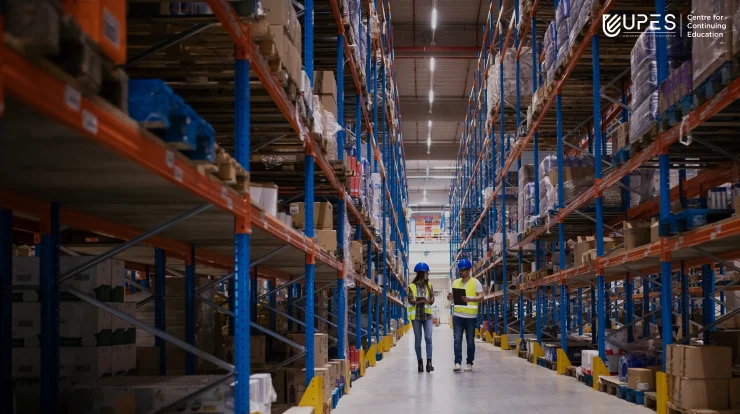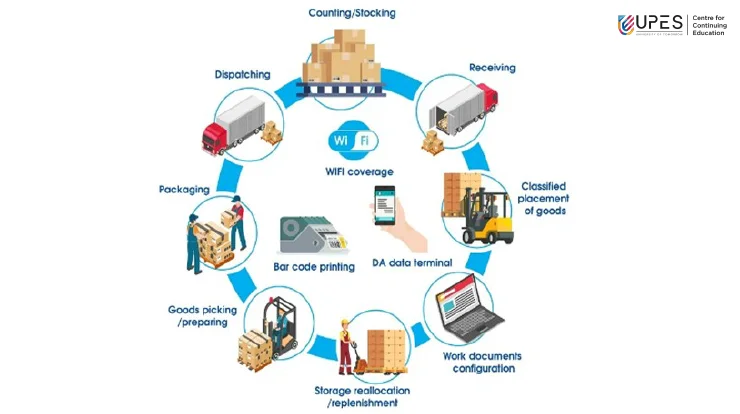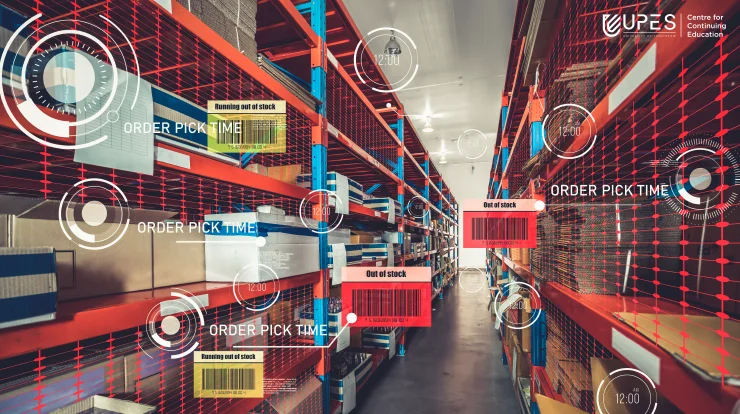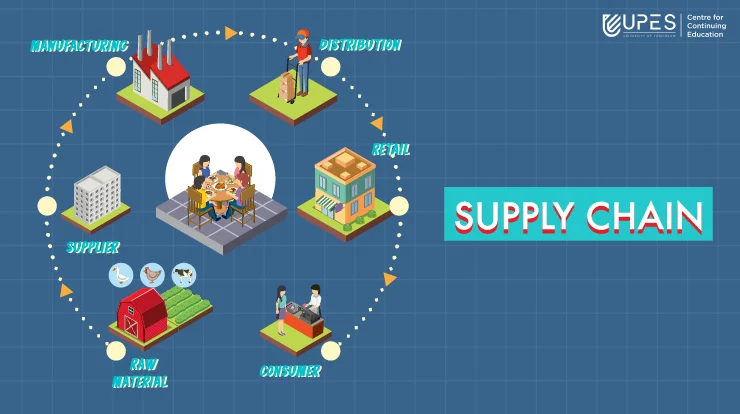Warehouse Management: Storing and Handling Goods and Materials

Storage and handling of resources and items in a warehouse are known as warehouse management. It encompasses numerous activities, including order selecting, storing, and receiving.
To efficiently manage these tasks, warehouse managers use a warehouse management system (WMS) that helps to optimize operations and reduce costs.
Below you can see some warehouse management examples that shows how in a typical well managed warehouse management system consist of the optimal interplay and coordination between the logistics, operations, inventory management, sales to have a smoothly functioning logistics and supply chain.
What do you mean by warehouse management?
Warehouse management refers to managing a warehouse’s operations to ensure the efficient storage and handling of goods and materials.
Guarantee that the warehouse runs efficiently and meets the organization’s goals; it involves managing inventory, equipment, and employees. In addition, warehouse management is essential to the supply chain because it influences the effectiveness of downstream activities like production and distribution.
Using best practices, including maximizing space utilization, lowering inventory carrying costs, and maintaining safety and security, are all part of effective warehouse management.
The demand for additional warehouse space to accommodate rising customer demands has increased due to the recent rapid growth of the global e-commerce market, which is anticipated to surpass $29 trillion by 2023.

What is the role of warehouse management?
The success of a business depends on the proper storage and handling of goods and supplies, which is where warehouse management comes into play.
Effective warehouse management can lower the cost of carrying goods, enhance inventory accuracy, make the best use of available space, and raise customer happiness. In addition to guaranteeing safety and security, warehouse management is crucial in preventing damage to and loss of resources and items.
Warehouse managers can enhance the efficiency of their operations, cut expenses, and gain a competitive edge by implementing best practices like a warehouse management system (WMS) and embracing lean concepts.
Overall, the importance of warehouse management must be considered, as it is critical to the success of a business’s supply chain operations.
Handling goods and materials in the warehouse
Handling goods and materials is a crucial part of warehouse management in logistics.
1. Manual Handling
Manual handling refers to warehouse workers physically moving products and commodities. More miniature goods are typically handled manually since they are both efficient and economical.
To prevent injuries, manual handling, which includes lifting, carrying, pushing, and tugging, needs to be done with the proper training and tools.
2. Mechanized Handling
Moving products and materials throughout the warehouse entails using machineries like forklifts, pallet jacks, and conveyors.
This approach is appropriate for heavier and more important things for which safe or practical physical handling cannot be achieved.
3. Automated Handling
Robotics, automated storage and retrieval systems, and automated guided vehicles (AGVs) are a few examples of the technology used in automatic handling to transport products and materials around a warehouse.
Automatic handling can lower labor costs, boost output, and enhance safety, but it needs substantial initial investment.
4. Special Handling
Handling products that need exceptional circumstances or procedures, such as hazardous materials, perishable goods, or high-value items, is known as special handling.
This technique requires specialized workers and equipment and must adhere to laws and industry norms.
What are the 4 basic functions in a warehouse?
These functions can be managed manually or through warehouse management software to optimize efficiency and accuracy. This section will discuss the four essential tasks in a warehouse.

1. Receiving
The initial task at a warehouse is receiving, where incoming supplies and commodities are examined, confirmed, and sorted. It entails taking items out of transport vehicles, inspecting them for flaws or damage, and ensuring they line up with purchase orders.
Receiving also includes marking products and materials with distinctive identifiers to aid in their tracking throughout the warehouse, such as barcodes or serial numbers.
2. Storage
The placement of items and materials in their allotted locations is done during storage, which is the second function of a warehouse. Choosing where to place goods within the warehouse and using storage systems like racks, shelves, bins, or pallets are all parts of the storage function.
Order to prevent damage or deterioration also entails ensuring that products are correctly stored, such as in environments with controlled temperatures or humidity levels.
3. Order Picking
The third activity in a warehouse is order picking, which involves retrieving supplies and products from storage areas to complete customer orders. It entails choosing the appropriate quantity of products and materials by the order’s requirements and preparing them for shipping.
Order picking can be mechanized using technology like pick-to-light systems or handheld devices or done manually using paper-based methods.
4. Shipping
The fourth and last task at a warehouse is shipping, which involves preparing supplies and products for delivery. It includes putting supplies and goods into shipment containers, labeling them with the correct shipping information, and placing them on transport vehicles.
Verifying that the correct goods and materials are being transported also requires shipment verification techniques like barcode or serial number scanning.

Conclusion
Warehouse management is critical in logistics and supply chain operations. By efficiently storing and handling goods and materials, warehouse managers can reduce costs and improve customer satisfaction.
Warehouse managers may streamline their operations and maintain a competitive edge in today’s fast-paced business world with warehouse management systems and data analytics. Overall, show how crucial efficient warehouse management is to commercial success.
UPES Online Admission Enquiry
Recommended Courses


Logistics and Supply Chain
PG Certification Program in Logistics and Supply Chain Management
View Program
Latest Blogs

Digital Marketing vs Data Analytics: Which Career Should You Choose?
Battle of skills: Digital Marketing vs Data Analytics—compare 2025 salaries, skills & job roles. Expert tips to choose your future career path!
Read MoreJun 15, 2025 I 12 mins
Why Should I Choose UPES Online? 10 Reasons Why
Explore why UPES Online stands out in online education. Learn about flexible learning, UGC-approved degrees, expert faculty & credible online programs. Enroll now!
Read MoreAug 21, 2025 I 5 min
Can Distance Learning Fully Replace Traditional MBA Education? Challenges & Limitations
Find out if distance learning can truly replace a traditional MBA. Learn key challenges, limitations, expert opinion & insights.
Read MoreSep 2, 2025 I 4 mins
Online MBA Capstone Projects and the Importance They Hold
Know the importance of online MBA capstone projects. Learn how they build real-world skills, boost career opportunities, & add industry value.
Read MoreSep 7, 2025 I 5 mins
UPES Online MBA vs Other Top Universities: Why Students Prefer UPES
Compare UPES Online MBA with other top universities. Know why students prefer UPES online over others. Check fee, flexibility, faculty, ROI, & career scope.
Read MoreOct 1, 2025 I 7 mins








